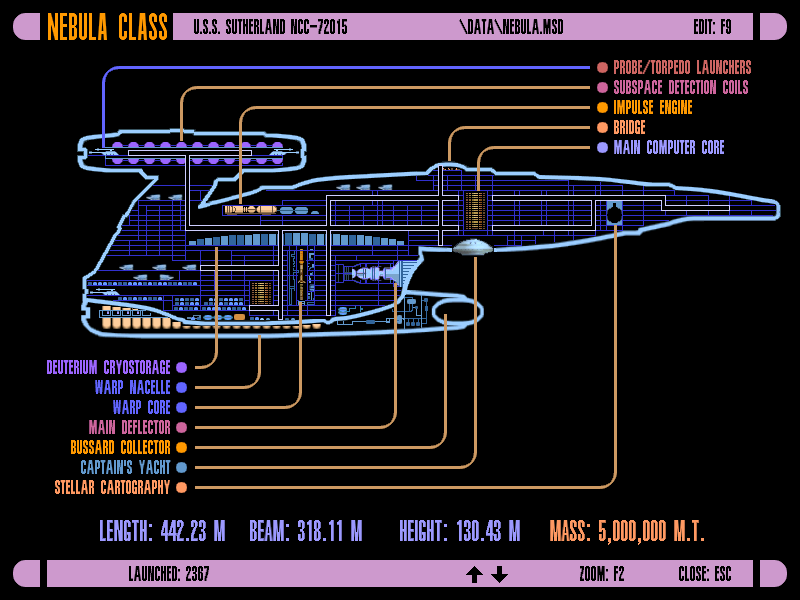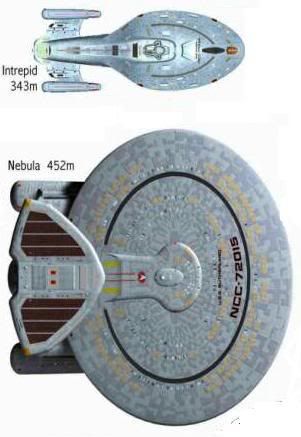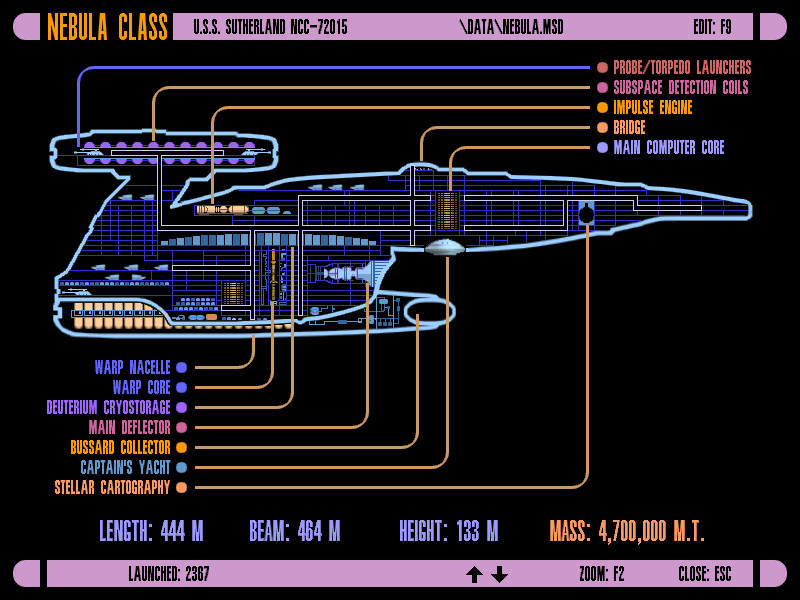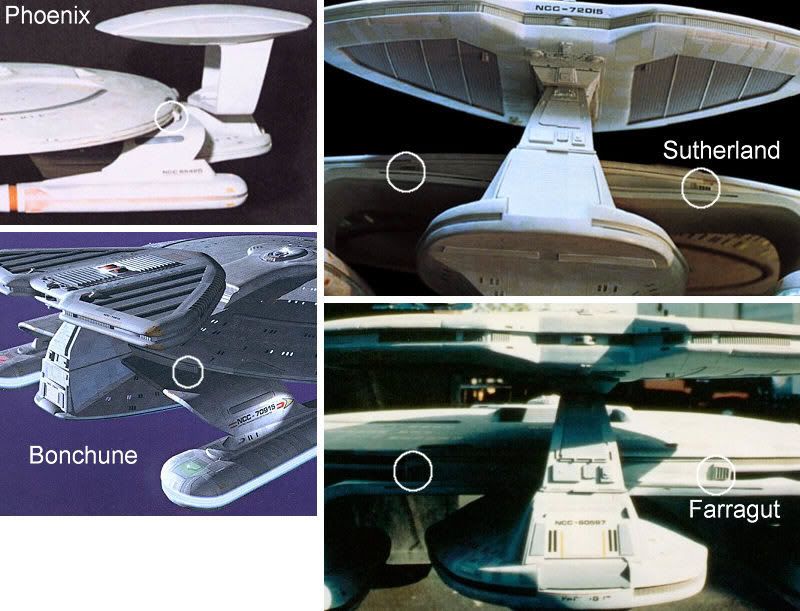Here's the Nebula class schematic for the next release of LCARS 24, ready for nitpicking and corrections. There seems to be a lot of disagreement about the specs, and the various schematics to be found on the Web conflict with one another on many minor points. I looked at the photos of two filming models at Ex Astris Scientia in an attempt to resolve some of that.
Ex Astris Scientia: Nebula Class Observations
http://i6.photobucket.com/albums/y247/LCARS24user/NEB-LC24.png
About the mass, Starship Volumetrics:
http://www.st-v-sw.net/STSWvolumetrics.html
Dimensions: Advanced Starship Design Bureau:
http://techspecs.acalltoduty.com/nebula.html
Some beauty shots, at explorermedia.net:
http://www.explorermedia.net/main/e107_plugins/forum/forum_viewtopic.php?46

Ex Astris Scientia: Nebula Class Observations
http://i6.photobucket.com/albums/y247/LCARS24user/NEB-LC24.png
About the mass, Starship Volumetrics:
http://www.st-v-sw.net/STSWvolumetrics.html
Dimensions: Advanced Starship Design Bureau:
http://techspecs.acalltoduty.com/nebula.html
Some beauty shots, at explorermedia.net:
http://www.explorermedia.net/main/e107_plugins/forum/forum_viewtopic.php?46

Last edited:



